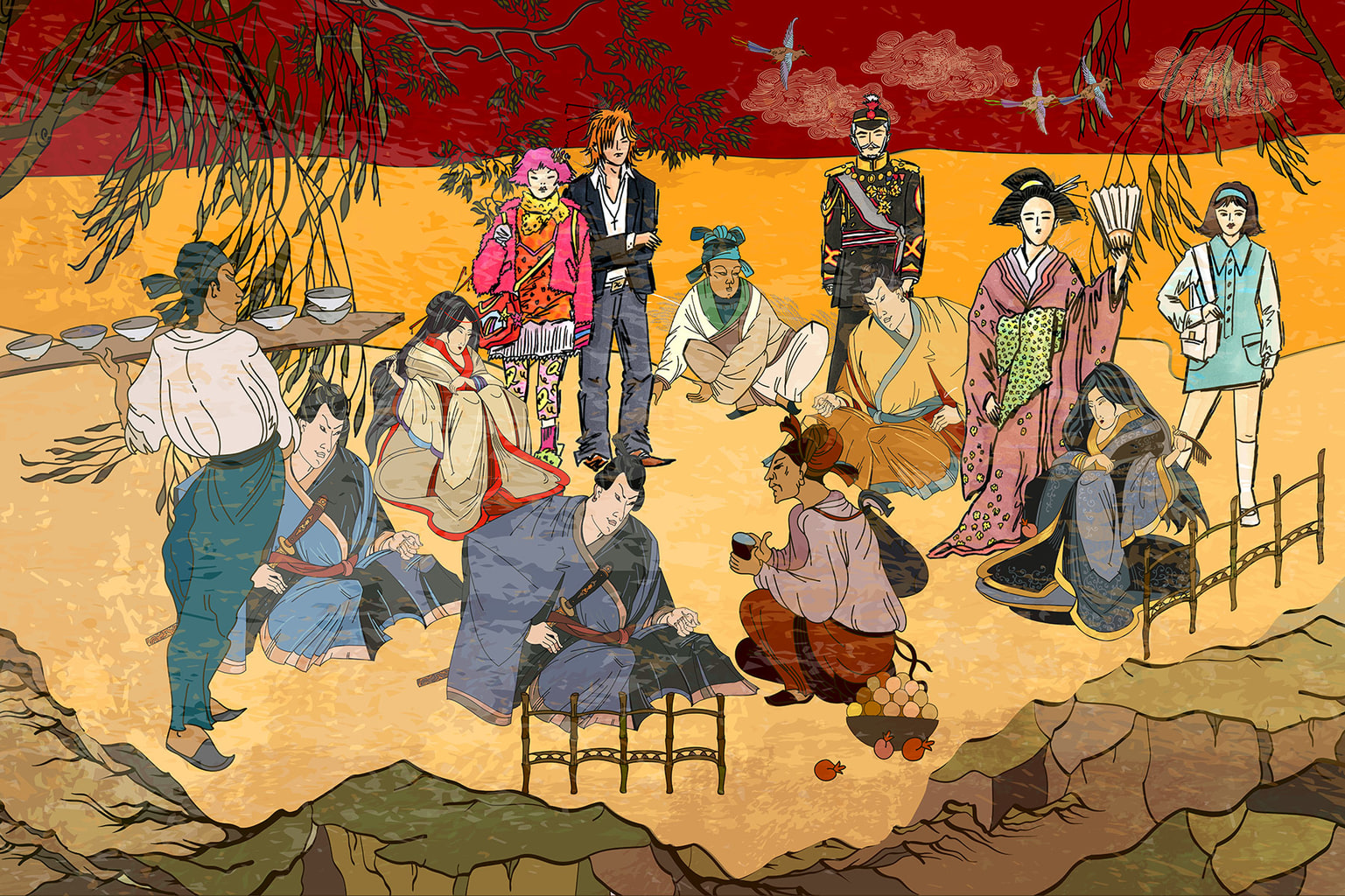 Edit
Edit
Japanese fashion and art have a rich history and continue to influence global trends today. The interplay between traditional aesthetics and modern innovation has shaped Japan’s unique fashion landscape.
Historically, the kimono has been central to Japanese fashion. During the Edo period (1603-1868), kimono creation evolved into a specialized art form, with some pieces costing more than a middle-class family’s income[1]. The kimono’s importance extended beyond clothing, becoming a symbol of status and artistry[3].
Japanese art has significantly influenced fashion both domestically and internationally. Traditional motifs such as landscapes, flowers, birds, cherry blossoms, dragons, and waves have been incorporated into clothing designs[1]. This influence, known as Japonisme in the West, saw Japanese aesthetics applied to fashion items beyond kimonos[2].
In the post-World War II era, Japan experienced a fashion revolution:
Modern Japanese Fashion Designers
Japanese designers gained worldwide acclaim in the 1970s, reshaping global fashion perspectives[4]. Designers like Rei Kawakubo and Yohji Yamamoto broke onto the international scene with unprecedented designs[5]. Their work often challenged traditional notions of beauty and form, emphasizing oversized silhouettes and unconventional aesthetics.
Contemporary Trends
Today, Japanese fashion continues to evolve, blending traditional elements with modern sensibilities. The Heisei era (1989-2019) saw the rise of distinct fashion tribes unique to Japan, such as visual kei, gyaru, Lolita, and Harajuku street fashion[3]. These styles often mix old and new, East and West, creating extreme hybrids that both connect and subvert aspects of local and overseas cultures.
Influence on Global Fashion
Japanese fashion and art continue to impact global trends. Elements of Japanese design, from minimalist aesthetics to avant-garde concepts, are regularly seen in international fashion collections. The freedom of movement and simple form of the kimono, for instance, had a profound impact on Western fashion at the turn of the 20th century[6].
Japanese fashion remains a dynamic force, constantly reinterpreting tradition through a contemporary lens while inspiring designers and fashion enthusiasts worldwide.
Citations
[1] https://www.thekaftancompany.com/blogs/kaftan-news/japanese-art-is-the-latest-trend-in-today-s-fashion [2] https://fashionunited.uk/news/fashion/exploring-japan-s-influence-on-global-fashion/2017081125461 [3] https://www.tokyoweekender.com/art_and_culture/japanese-fashion-eras-heian-heisei/ [4] https://www.nact.jp/english/exhibition_special/2021/fij2020/ [5] https://diluo.digital.conncoll.edu/Asianart/exhibition/reshaping-beauty-through-japanese-fashion/ [6] https://artsandculture.google.com/story/japonism-in-fashion-kyoto-costume-institute/6AWBrz8WpvPzKQ?hl=en [7] https://web-japan.org/trends/11_fashion/ [8] https://www.metmuseum.org/toah/hd/jafa/hd_jafa.htm
